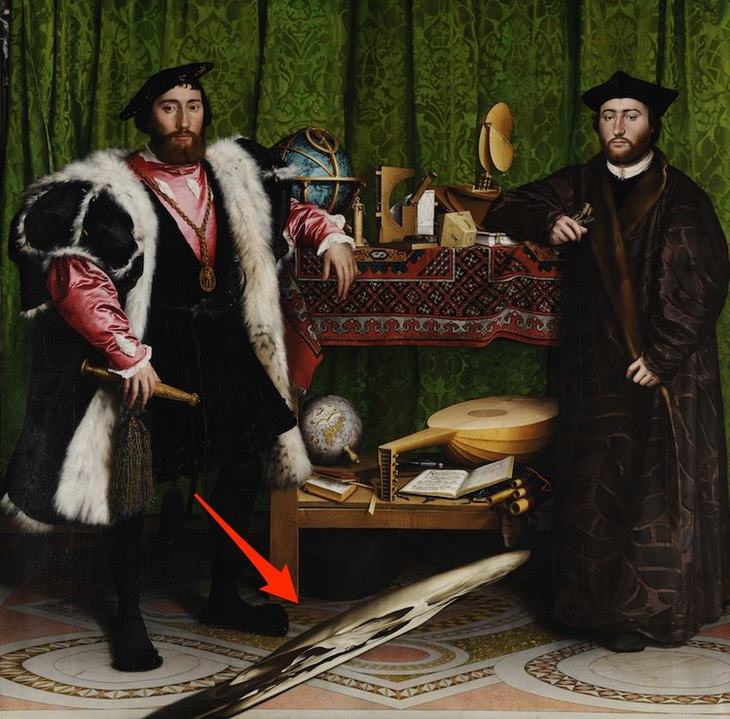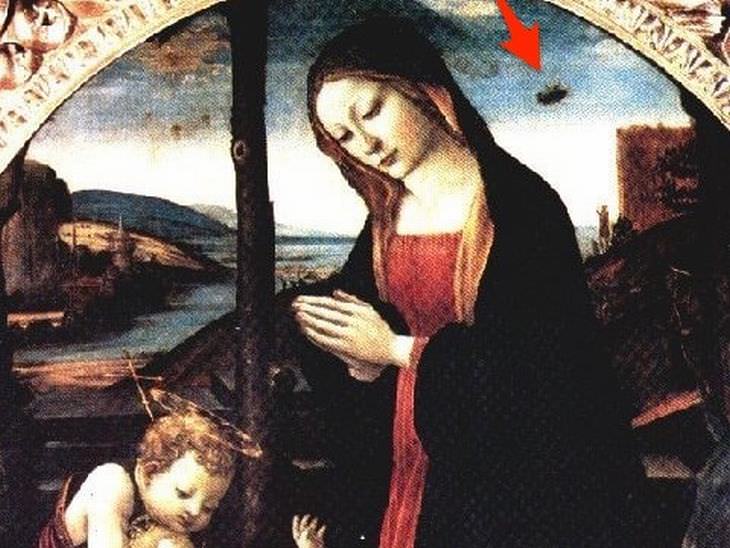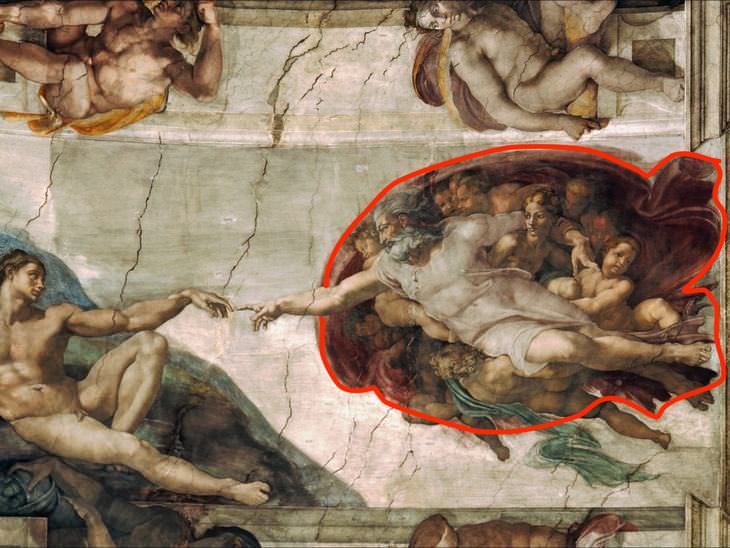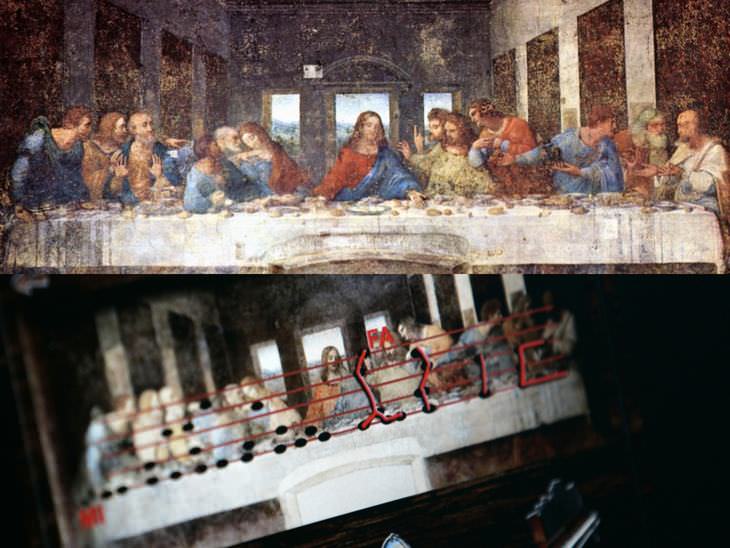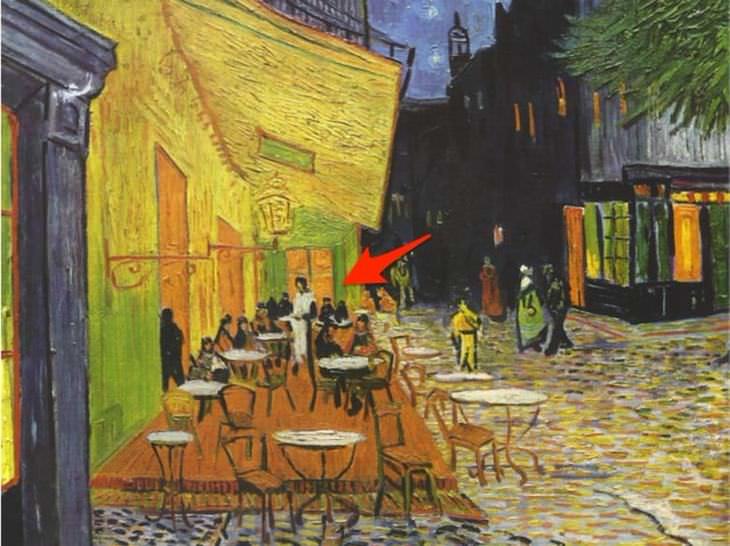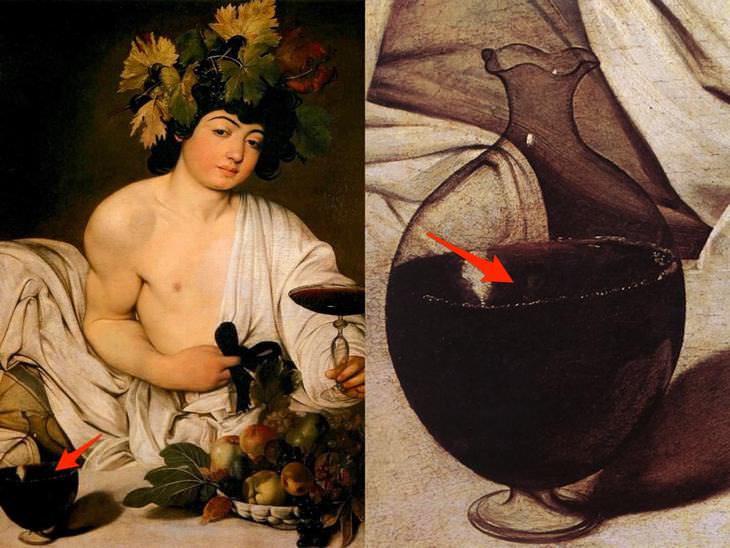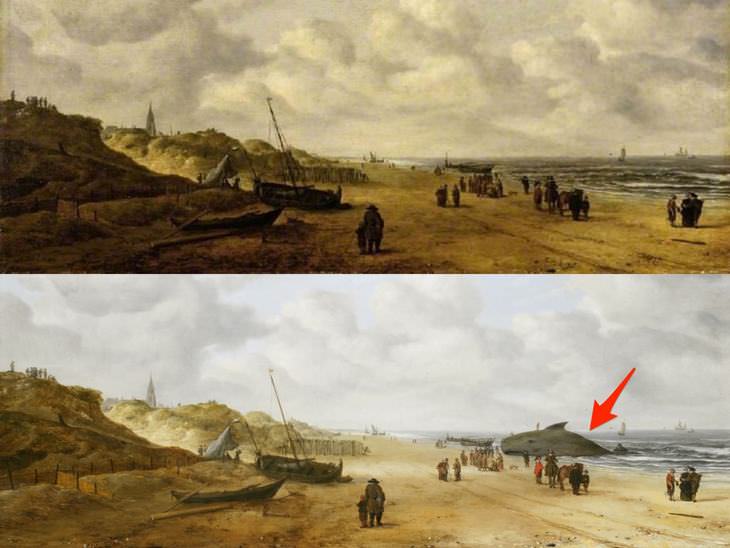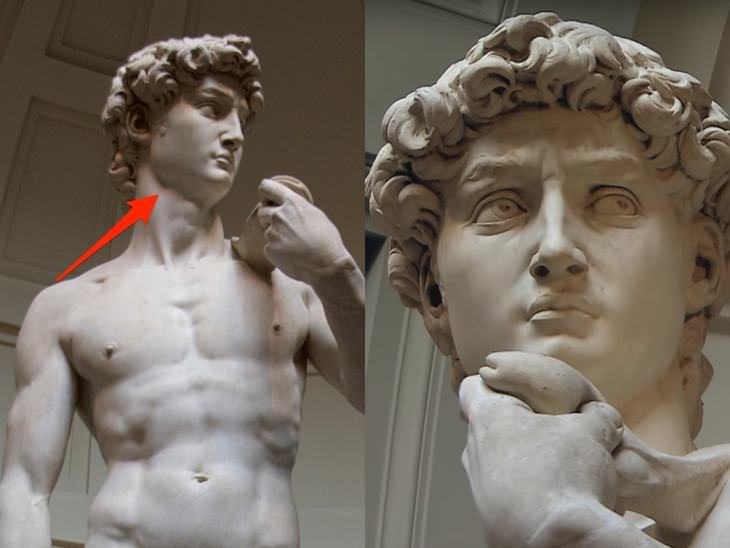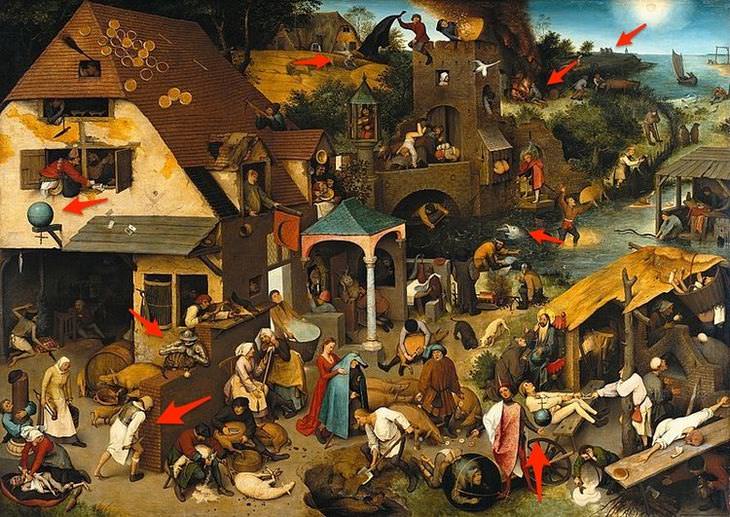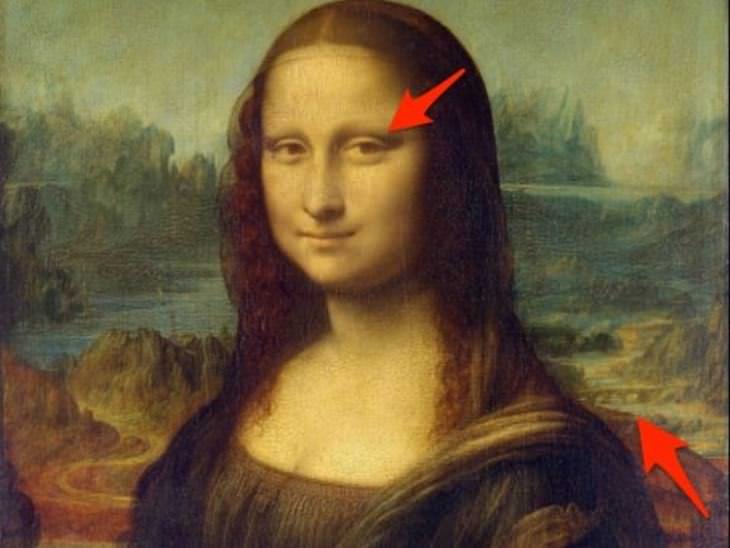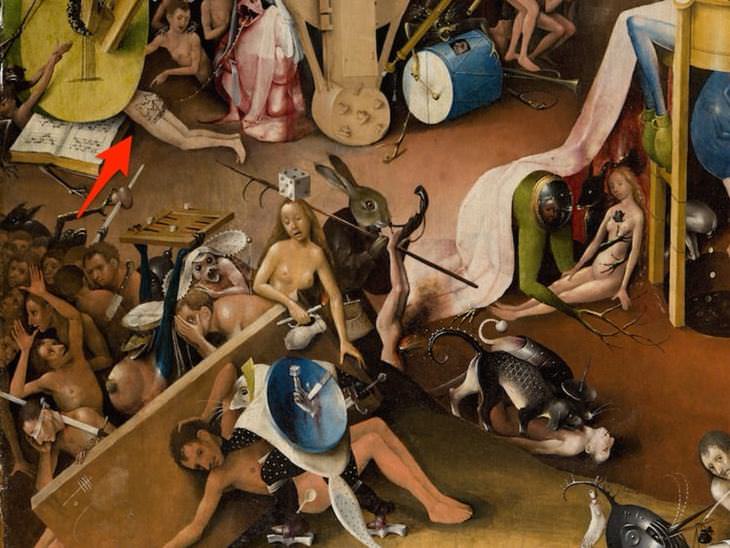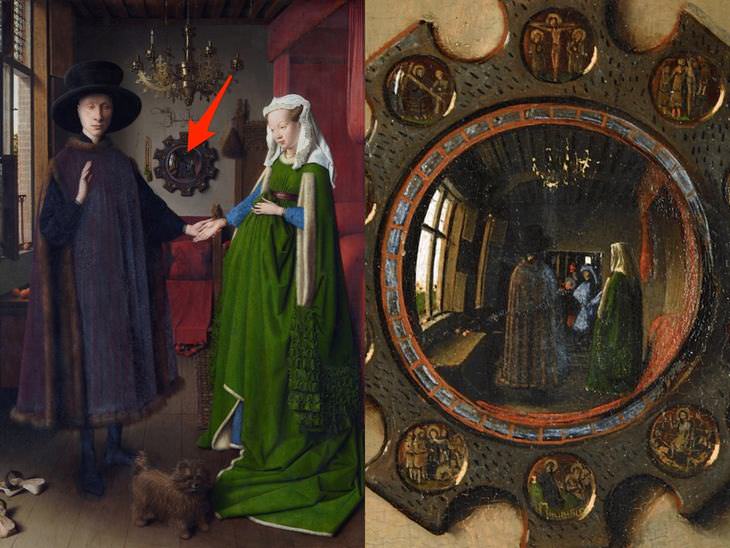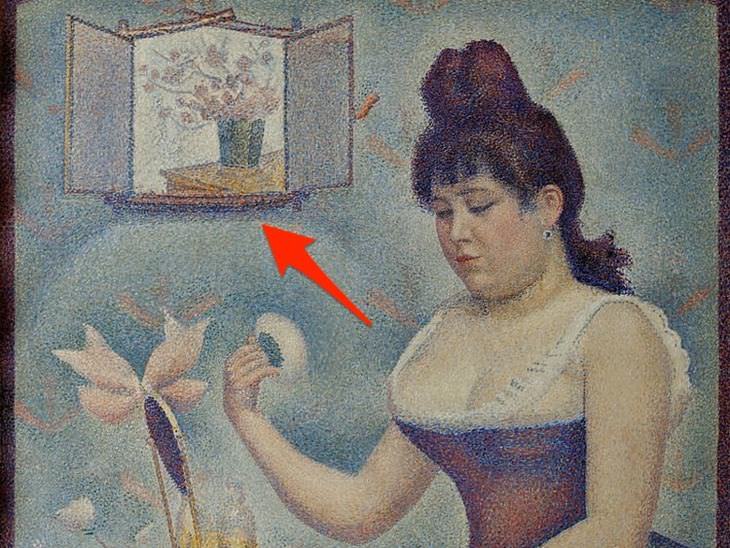1. The reference to mortality in The Ambassadors by Hans Holbein
This painting looks very realistic, but there’s something off about it. The “blob” between the two men depicted in it is the oddity, is actually a distorted human skull. You need to look at the painting from the right-hand side in order to be able to see it.
Many believe that it’s a reference to the Latin phrase, “memento mori”, which means “remember you shall die”. Apparently, it was the motto of the man who commissioned the painting (depicted on the left).
2. The "UFO" in Madonna with Saint Giovannino by Domenico Ghirlandaio
It has long been said that there’s a UFO hidden in the painting, with many conspiracy theorists being convinced that the anomaly is a depiction of an alien spacecraft. Although it doesn’t look like much at first, it increasingly looks like a UFO when you zoom in on it.
3. The easily-missed reference to the human body in the Creation of Adam
The red cloak surrounding the depiction of God on the ceiling of the Vatican’s Sistine Chapel is an anatomically-correct rendering of the human brain. Does this mean that Michelangelo believed that God was behind its creation? Although we’ll never know for sure, it’s an idea that’s widespread around the world.
4. The song in Leonardo da Vinci's Last Supper
Leonardo da Vinci was nothing less than a genius. The archetypal Renaissance polymath was an expert in countless different fields, not least music. He actually painted a song into one of his most famous paintings, The Last Supper, using the rolls on the table and the hands of the Apostles in place of musical notes. An Italian musician discovered this, and the notes actually play a beautiful song.
5. The reference to Da Vinci's Last Supper in Van Gogh's Cafe Terrace at Night
In this famous painting, Dutch master Vincent Van Gogh painted 12 patrons at the café that’s depicted, and the server has a Jesus-like quality to him. This has led people to speculate that Van Gogh was paying homage to Da Vinci’s Last Supper. The windowpane that’s behind the server also appears to be a subtle reference to the Christian cross.
6. The little piece of himself that Caravaggio left in Bacchus
Caravaggio painted a small rendering of himself into the jug of wine that Bacchus has next to him. This wasn’t actually discovered for more than 300 years after the painting was completed. Poor preservation led it to be forgotten, but it was rediscovered back in 2009 using modern technology.
7. The beached whale that emerged in Scheveningen Sands after its restoration
When Scheveningen Sands was painted in the 1600s, it contained a depiction of a group of beach-goers clustered around a beached whale. Somewhere along the way, the animal was painted over, leaving the group standing around for no visible reason. Apparently, this was down to the fact that depictions of dead animals were considered offensive in the 18th or 19th centuries.
8. The different stories in Michelangelo's David
Michelangelo’s 17-foot-tall statue of David appears to have been sculpted in such a way that he was never meant to be looked at head-on. When he’s viewed from below, he appears to have a calm expression on his face, but if you view it from eye level, he appears to have an expression of fear or even anger.
This is because David is depicted before he headed into battle with Goliath in the most famous underdog story of all time. In addition, the veins popping out of his arms and his furrowed brow further indicate his state of turmoil.
9. The devil in Giotto's fresco in the Basilica of St. Francis of Assisi
This fresco, which is more than 700 years old, has a cameo from the devil contained in it. This was only revealed in 2011 after art historian Chiara Furgoni noticed it when she was trying to figure out exactly when the fresco was completed. A nose, eyes, mouth and horns can be seen among the clouds.
10. The many proverbs in Pieter Brugel's depiction of a busy Dutch street
This painting’s official title is Netherlandish Proverbs, and it’s with good reason that it has that name. Many foreign proverbs are depicted in the painting, and some of them are still in use today.
From left to right: The Earth is upside-down (the whole world is upside-down), a man is hitting his head against a brick wall (hitting your head against the wall), a man is running with his behind on fire (running like your butt's on fire), a man is holding a globe (got the world in the palm of your hand), a fish eating another fish (there's always a bigger fish), a man is warming himself by a house fire (not caring who is hurt as long as it benefits you/roasting marshmallows at a house fire), the three figures in the back standing in a line (the blind leading the blind).
11. The hidden codes in Da Vinci's Mona Lisa
Although the Hollywood movie The Da Vinci Code resulted in much speculation about whether Leonardo Da Vinci’s Mona Lisa contained hidden codes in her eyes and in the background of her portrait, there isn’t any tangible proof of there being any.
With that being said, the Mona Lisa does have the letters LV visible in one of her eyes that can only be seen under a microscope, and there’s also the number 72 visible in the background. Some say that it’s the letter L and a 2 rather than 72, but this lack of clarity is down to the painting being over 500 years old. LV could easily stand for Leonardo Da Vinci, but the meaning of 72 may never be established.
12. A man with notes on his bum in the Garden of Earthly Delights
This painting is physically enormous, and contains a ton of details. That’s why you need to take a closer look to see some of its finer points. The top-left corner, which represents Hell, features a man that has music printed across his backside. The music on his butt was transcribed by a college student called Amelia, and she calls it the “600-year-old butt song from Hell.”
13. Jan van Eyck drawing himself into his Arnolfini Portrait
Undoubtedly one of the most debated paintings ever, this painting has stoked controversy due to everything from the sandals to the dog to the positioning of the woman’s hands. With that being said, there’s an easily-missed detail in the mirror in the painting. There’s a self-portrait of the artist and his subjects depicted in it.
14. The covered up self-portrait of Georges Seurat in Young Woman Powdering Herself
Madeleine Knobloch, the artist’s secret mistress, is depicted in this painting. He loved her so much that he actually inserted himself into it (he was depicted reflected in a mirror), but he later covered it up with a window with a vase of flowers sitting on it. Apparently, this happened because a friend told him that it looked strange.

